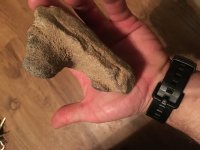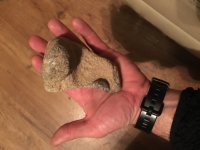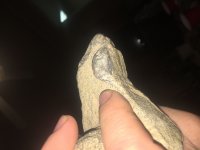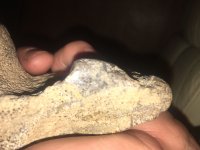Medicinemanj
Greenie
- Dec 15, 2018
- 15
- 14
- Primary Interest:
- All Treasure Hunting
So unless it worked the first 4 times I tried, this is my first post on here. I’m not good with geology, but I’ve found a lot of Native American artifacts. These two were found in close proximity. You may not can tell, but the rock in the first four pics has been flaked (given the high impact ripples) and also ground several places...mainly around the edges. You may can see the shiny areas. It feels heavy for its size. The second rock has layers chipped off on one corner (possibly by accident) and seems to have ground down to form this triangular shape. Hopefully this gets posted successfully. I watched a tutorial but any additional advice will be appreciated. I’ll have a lot more to come in the future if all goes smooth


































